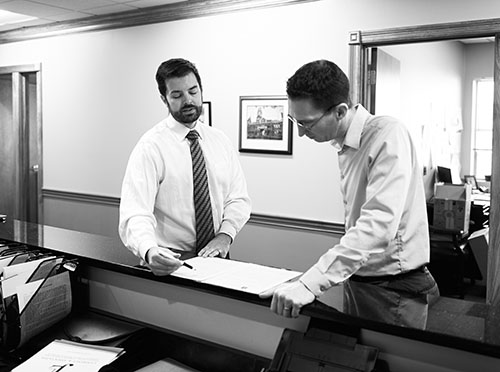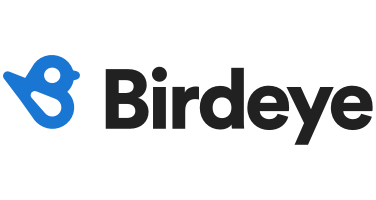Understanding the Rights a Mortgage Company Has After Bankruptcy
Posted on Monday, July 18th, 2016 at 2:25 pm
The following post is part of our Law Student Blog Writing Project, and is authored by Mark Ashley Hatfield, a Juris Doctor student at the University of Kentucky College of Law.
Understanding the Rights a Mortgage Company Has After Bankruptcy
 Most homeowners in America do not own their home free and clear. In fact, a study conducted by online real estate marketplace, Zillow, revealed that the percentage of American homeowners who do own their home free and clear hovers around the low-figure of 30%. This means that roughly 70% of homeowners do not own their homes outright and are dealing with mortgage companies on a regular basis. Understanding that home ownership is one of the most significant responsibilities a person can have, it is particularly important to understand the rights you sign away to a mortgage company when you are securing money for your home. This article will examine a recent Ohio Supreme Court case (Deutsche Bank Natl. Trust Co. v. Holden) that establishes the rights a mortgage company retains even after the mortgager (the homeowner) has filed bankruptcy.
Most homeowners in America do not own their home free and clear. In fact, a study conducted by online real estate marketplace, Zillow, revealed that the percentage of American homeowners who do own their home free and clear hovers around the low-figure of 30%. This means that roughly 70% of homeowners do not own their homes outright and are dealing with mortgage companies on a regular basis. Understanding that home ownership is one of the most significant responsibilities a person can have, it is particularly important to understand the rights you sign away to a mortgage company when you are securing money for your home. This article will examine a recent Ohio Supreme Court case (Deutsche Bank Natl. Trust Co. v. Holden) that establishes the rights a mortgage company retains even after the mortgager (the homeowner) has filed bankruptcy.
Imagine the following fact-pattern: a family refinances a mortgage on their home, signs a promissory note to ensure the lender the money will be paid back, and in a few years, when hard-times hit, the family is unable to make the mortgage payments. Consequently, the family, after seeking advice and attempting to resolve the issue, files for bankruptcy relief. Perhaps you have heard a similar story or experienced a similar situation yourself, but for Glenn and Ann Holden, it was not just a story they overheard, it was their personal experience.
On September 1, 2005, the Holdens refinanced the mortgage on their home and Mr. Holden signed a promissory note for $69,300 in favor of Novastar Mortgage, Inc., and both Holdens signed a mortgage identifying Mortgage Electronic Registration Systems, Inc. (MERS) as mortgagee (lender). Around November 1, 2005, Deutsche Bank purchased the debt, and the next month, the loan servicer, JPMorgan Chase Bank, received physical possession of the original note, indorsed in blank (“a signature by the creator of an instrument, such as a check, which enables any holder of the instrument to assert a claim for payment”), on behalf of Deutsche Bank. Thereafter, the Holdens made their mortgage payments to Chase Bank. Less than four years later, in August of 2009, the Holdens were struggling to make their mortgage payments. After seeking advice from Chase Bank, the Holdens decided to default on their loan in order to be able to seek a modification on their loan. Unfortunately, the Holdens were still unable to receive a modification on their loan and resulted to a petition for Chapter 7 Bankruptcy. The bankruptcy court subsequently granted the petition and discharged the Holdens obligation on the promissory note. Shortly after, on September 17, 2010, Deutsche Bank received an assignment of the mortgage from MERS. I know this paragraph is very dense with facts, but understanding the facts of this case is important to make sense of the court’s ruling; so feel free to re-read it a few times if necessary.
The court battle itself would begin nearly a year after the recording of the mortgage assignment when Deutsche Bank filed a foreclosure action against the Holdens on August 12, 2011. Here are where the detailed facts come back into play. The Holdens filed an answer and counterclaim premised on the fact that Deutsche Bank did not actually own the promissory note or the mortgage at the time it commenced its foreclosure action against them. This is an argument stemming from the fact that, as you may recall, the note was endorsed in blank. Meaning there was no proof, besides the testimony offered by Deutsche Bank, that the note had been transferred to it from Novastar. After this initial filing, the case proceeded through the Ohio court system making its way to the Ohio Supreme Court as follows: Deutsche Bank won on a summary judgment (no question of fact that Deutsche Bank was the rightful owner of the note) motion at trial; Ohio’s Ninth District Court of Appeals reversed the trial court’s decision explaining that Deutsche Bank had failed to show they were the owners of the note; and Deutsche Bank appealed to the Supreme Court.
Before the Supreme Court of Ohio was the issue of whether Deutsche Bank had standing (“whether the claimant has sufficient personal stake in the litigation to obtain a judicial resolution of the controversy”) to foreclose on the Holden’s home in order to collect the debt of which they were owed. The peculiar facts of this case, as you may remember, is that the Holdens had already filed for bankruptcy by the time the foreclosure was commenced. Not only had they filed, but they were granted their petition, and relieved of the debt owed under the 2005 promissory note. This little twist in the facts forced the court to look to its precedent for guidance.
The court stated that they had previously recognized that “upon a mortgagor’s default, the mortgagee may elect among separate and independent remedies to collect the debt secured by a mortgage.” After listing several remedy options for the mortgagee, the court stated that it has “long recognized that an action for a personal judgment on a promissory note and an action to enforce the mortgage covenants are ‘separate and distinct’ remedies.” Thus, simply because a note has been discharged and mortgagees are legally unable to seek a personal judgement against the mortgagor on that note does not mean that the mortgagees are barred from raising an action on the mortgage itself. Essentially, although the bankruptcy court had relieved the Holdens of their obligation on the promissory note, their home was still not safe from foreclosure because the owner of the note and mortgage still had a property interest created by the default on the mortgage.
Stated succinctly by the court,
Where a promissory note is secured by mortgage, the note, not the mortgage, represents debt… When a debtor declares bankruptcy, the creditor’s surviving right to foreclose on the mortgage can be viewed as a ‘right to an equitable remedy’ for the debtor’s default on the underlying mortgage. (citations omitted)
The court, after stating its position, stated that Deutsch Bank still had the burden of proving that it was the rightful holder of the note. Clarifying one of its older opinions, Schwartzwald, the court said that this burden did not include a magical combination of documents. The party bringing the claim simply needed to show that it had a personal stake in the outcome. Here, even though the note showed no physical signs of being transferred to Deutsch Bank, the facts presented were enough for the court to deem that Deutsch Bank had standing to bring the foreclosure action.
The takeaway from this case should not be a newfound (or increased) fear of dealing with mortgage companies. Instead, the key takeaways should be a better understanding of your state laws and how mortgage relationships may affect you in the future. Here, the Holdens filed bankruptcy in hopes of being relieved from their debt. The Ohio court was not so inclined to share the same belief, however, and established a principal that allows the holder of the mortgage “standing to foreclose on the property and to collect the deficiency on the note from the foreclosure of the sale of the property.” Learn from this case. Make sure you understand the mortgage process and have a firm grip on your financial situation before signing the dotted line.










